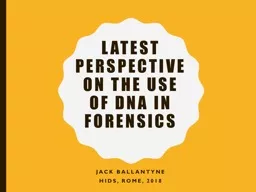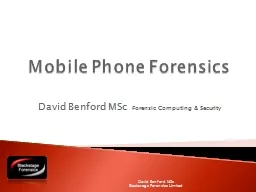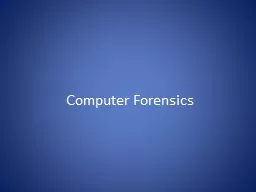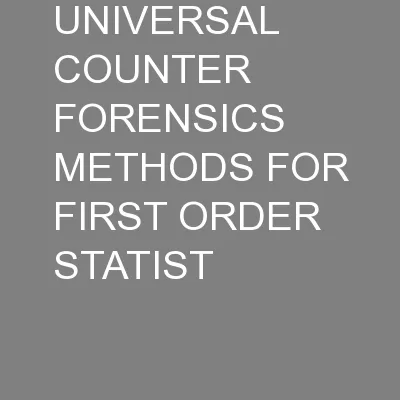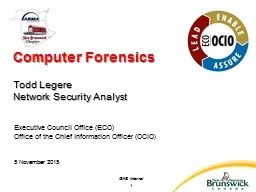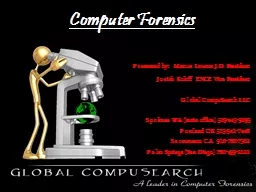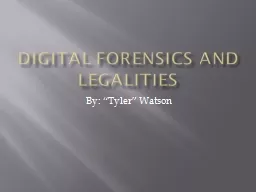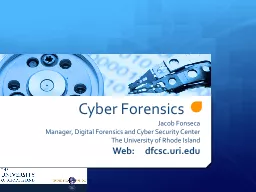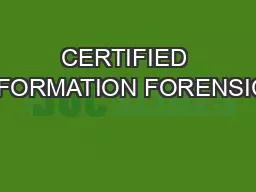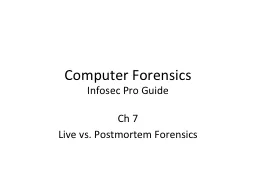PPT-Latest perspective on the use of DNA in forensics
Author : jane-oiler | Published Date : 2020-04-05
Jack Ballantyne HIDS Rome 2018 Forensic Science Forensic sciences purpose is to help establish facts that may be in question the facts in question revolve around
Presentation Embed Code
Download Presentation
Download Presentation The PPT/PDF document " Latest perspective on the use of DNA in..." is the property of its rightful owner. Permission is granted to download and print the materials on this website for personal, non-commercial use only, and to display it on your personal computer provided you do not modify the materials and that you retain all copyright notices contained in the materials. By downloading content from our website, you accept the terms of this agreement.
Latest perspective on the use of DNA in forensics: Transcript
Download Rules Of Document
" Latest perspective on the use of DNA in forensics"The content belongs to its owner. You may download and print it for personal use, without modification, and keep all copyright notices. By downloading, you agree to these terms.
Related Documents

